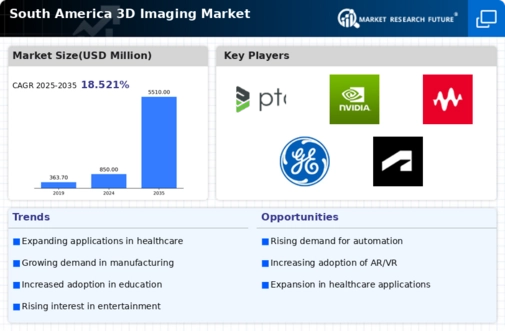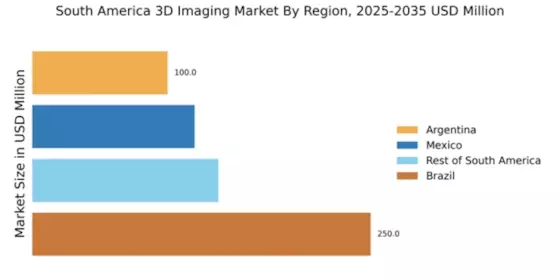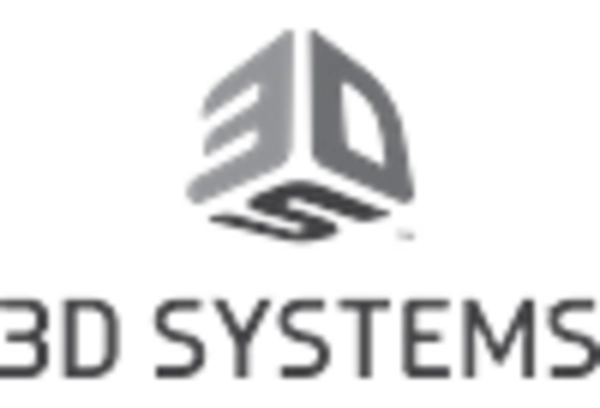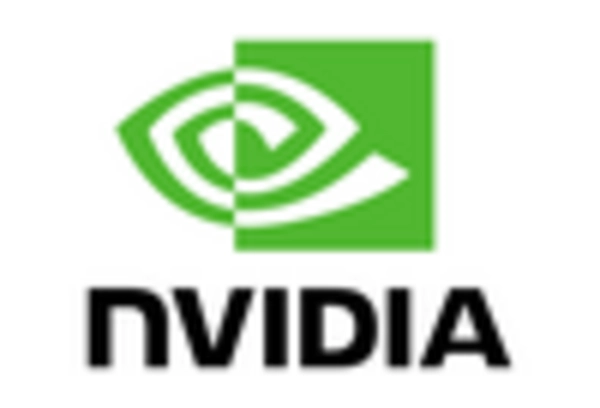The competitive dynamics within the 3d imaging market in South America are characterized by rapid technological advancements and a growing demand for innovative solutions across various sectors, including healthcare, manufacturing, and entertainment. Key players such as NVIDIA Corporation (US), Autodesk Inc. (US), and Siemens AG (DE) are at the forefront, leveraging their strengths in artificial intelligence, software development, and engineering solutions. These companies are strategically positioned to capitalize on the increasing adoption of 3D imaging technologies, focusing on innovation and regional expansion to enhance their market presence. Their collective strategies not only foster competition but also drive the overall growth of the market, as they continuously seek to improve product offerings and customer engagement.
In terms of business tactics, companies are increasingly localizing manufacturing and optimizing supply chains to better serve the South American market. The competitive structure appears moderately fragmented, with several players vying for market share while also collaborating through partnerships and alliances. This collective influence of key players is shaping a landscape where innovation and customer-centric solutions are paramount, allowing companies to differentiate themselves in a crowded marketplace.
In October 2025, Autodesk Inc. (US) announced a strategic partnership with a leading South American architectural firm to enhance its 3D modeling capabilities. This collaboration aims to integrate advanced 3D imaging technologies into architectural design processes, thereby streamlining workflows and improving project outcomes. The significance of this partnership lies in Autodesk's commitment to localizing its offerings, which may enhance its competitive edge in the region by addressing specific market needs and preferences.
In September 2025, Siemens AG (DE) launched a new 3D imaging software tailored for the manufacturing sector, designed to optimize production processes and reduce waste. This initiative reflects Siemens' focus on digital transformation and sustainability, aligning with global trends towards more efficient manufacturing practices. The introduction of this software could potentially position Siemens as a leader in providing innovative solutions that meet the evolving demands of the South American market.
In August 2025, NVIDIA Corporation (US) unveiled a new AI-driven 3D imaging platform aimed at the healthcare sector, facilitating advanced diagnostic capabilities. This strategic move underscores NVIDIA's commitment to integrating artificial intelligence into its product offerings, which may enhance the accuracy and efficiency of medical imaging. The implications of this development are profound, as it not only strengthens NVIDIA's foothold in the healthcare market but also highlights the growing intersection of technology and healthcare solutions.
As of November 2025, current trends in the 3d imaging market are increasingly defined by digitalization, sustainability, and the integration of AI technologies. Strategic alliances among key players are shaping the competitive landscape, fostering innovation and collaboration. Looking ahead, it appears that competitive differentiation will evolve, shifting from traditional price-based competition to a focus on technological innovation, supply chain reliability, and customer-centric solutions. This transition may ultimately redefine how companies compete, emphasizing the importance of adaptability and forward-thinking strategies in a rapidly changing market.


















Leave a Comment